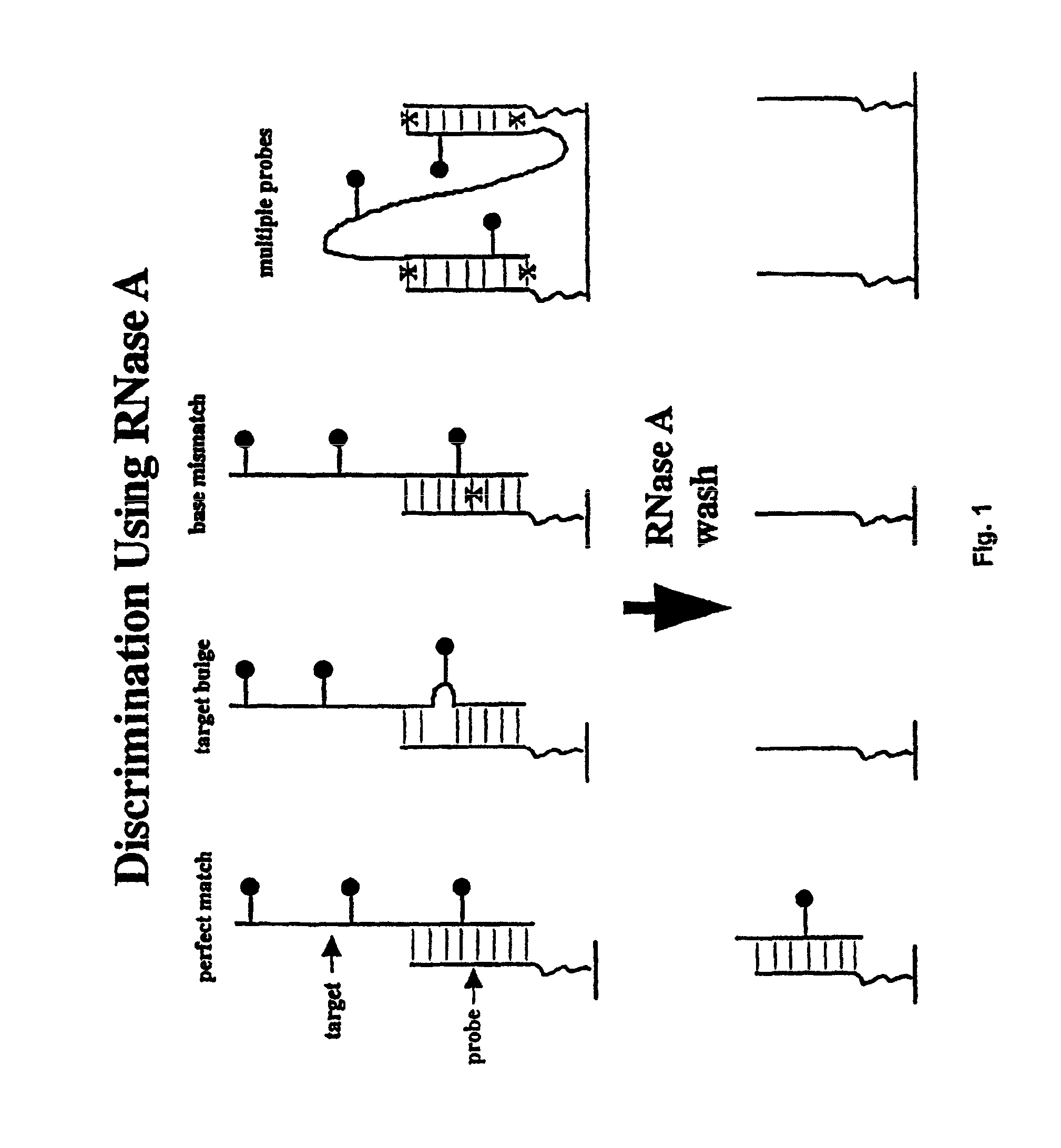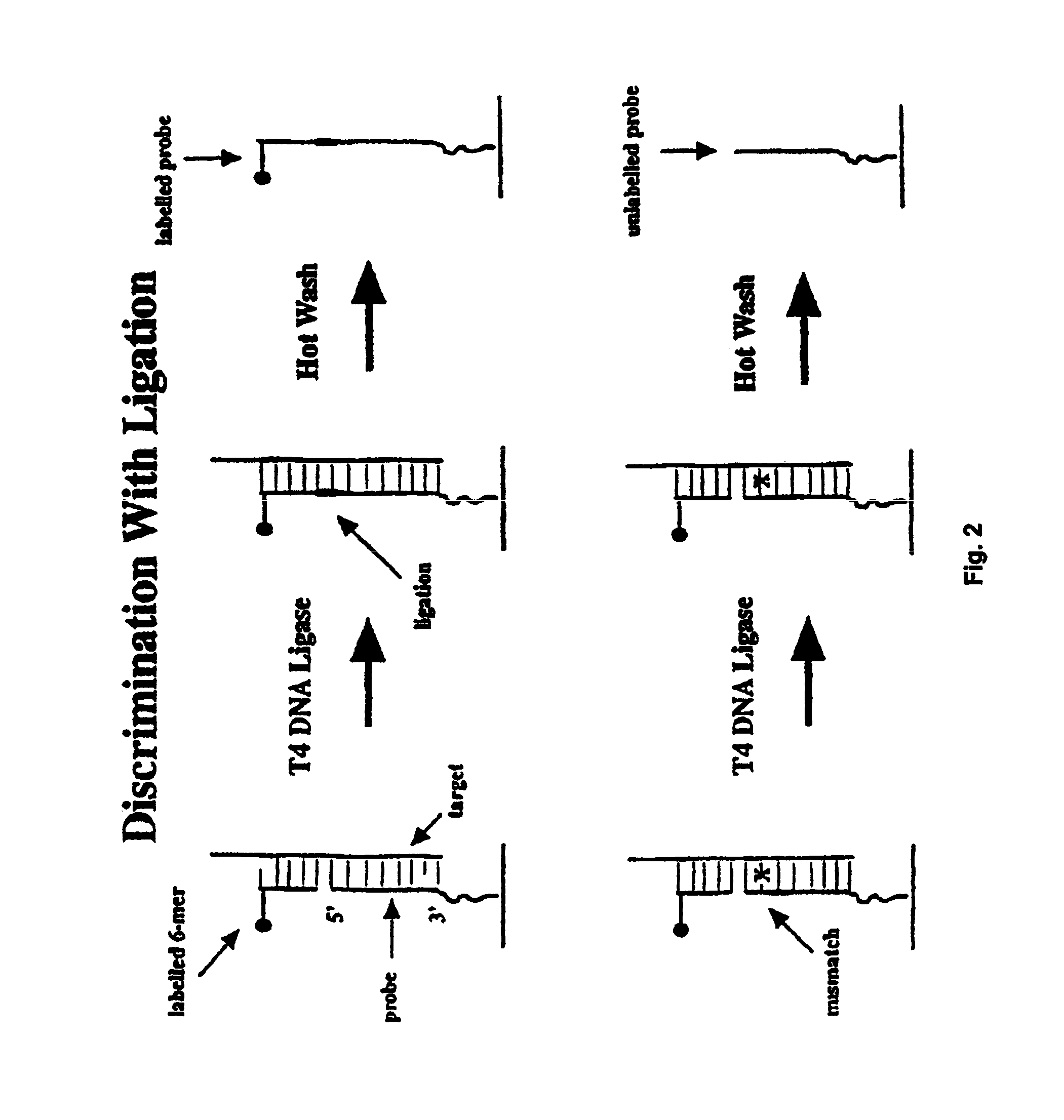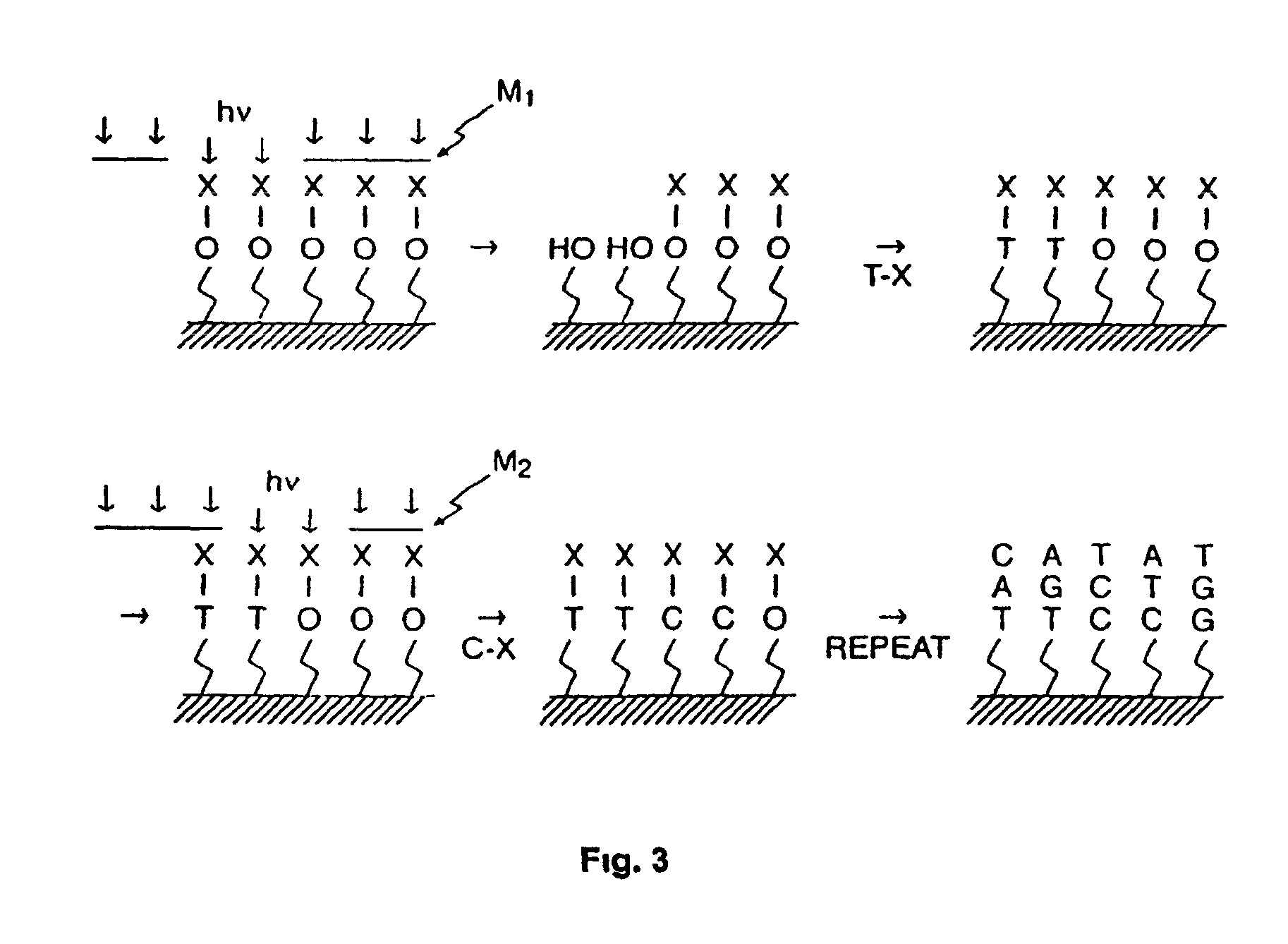Methods of enzymatic discrimination enhancement and surface-bound double-stranded DNA
a technology of enzymatic discrimination and surface bound doublestrands, which is applied in the field of methods of enzymatic discrimination enhancement and surface bound doublestranded dna, can solve the problems of large number of complex operations, large number of manual manipulations, and complex preparation, and achieve the effect of improving the quality of hybridization signals and being readily determined or verified
- Summary
- Abstract
- Description
- Claims
- Application Information
AI Technical Summary
Benefits of technology
Problems solved by technology
Method used
Image
Examples
example iv
[0289]In this example, a chip was made using the tiling strategy (A, C, G, T-containing probes for each base in the sequence) described above that covers a 50 base region of the protease gene of HIV-1 (SF2 strain). The probes are 11-mers, linked to the glass support by three PEG linkers. The substitution position (the position being interrogated by an A, C, G, or T base in the probe) is varied between the 5′ end of the probe, and five bases in from the 5′ end (referred to as positions end, -1, -2, -3, -4 and -5). The chip is synthesized using standard VLSIPS protocols. Prior to hybridization and ligation, the chip is phosphorylated using T4 polynucleotide kinase for 5 hours at 37° C. The target is a 75-mer oligonucleotide (denoted Hpro1), labelled at the 5′ end with fluorescein, that spans the complementary 50 base region on the chip.
[0290]The chip was initially hybridized with a 10 nM solution of Hpro1 in 6×SSP-T at 22° C. for 30 minutes. After hybridization, the chip was read, and...
example i
[0294]This example illustrates the general synthesis of an array of unimolecular, double-stranded oligonucleotides on a solid support.
[0295]Unimolecular double stranded DNA molecules were synthesized on a solid support using standard light-directed methods (VLSIPS™ protocols). Two hexaethylene glycol (PEG) linkers were used to covalently attach the synthesized oligonucleotides to the derivatized glass surface. Synthesis of the first (inner) strand proceeded one nucleotide at a time using repeated cycles of photo-deprotection and chemical coupling of protected nucleotides. The nucleotides each had a protecting group on the base portion of the monomer as well as a photolabile MeNPoc protecting group on the 5′ hydroxyl. Upon completion of the inner strand, another MeNPoc-protected PEG linker was covalently attached to the 5′ end of the surface-bound oligonucleotide. After addition of the internal PEG linker, the PEG is photodeprotected, and the synthesis of the second strand proceeded ...
example ii
[0298]This example illustrates the ability of a library of surface-bound, unimolecular, double-stranded oligonucleotides to exist in duplex form and to be recognized and bound by a protein.
[0299]A library of 16 different members was prepared as described in Example 1. The 16 j molecules all have the same composition (same number of As, Cs, Gs and Ts), but the order is different Four of the molecules have an outer strand that is 100% complementary to the inner strand (these molecules will be referred to as DS, double-stranded, below). One of the four DS oligonucleotides has a sequence that is recognized by the restriction enzyme EcoR1. If the molecule can loop back and form a DNA duplex, it should be recognized and cut by the restriction enzyme, thereby releasing the fluorescent tag. Thus, the action of the enzyme provided a functional test for DNA structure, and also served to demonstrate that these structures can be recognized at the surface by proteins. The remaining 12 molecules ...
PUM
| Property | Measurement | Unit |
|---|---|---|
| temperature | aaaaa | aaaaa |
| area | aaaaa | aaaaa |
| area | aaaaa | aaaaa |
Abstract
Description
Claims
Application Information
 Login to View More
Login to View More - R&D
- Intellectual Property
- Life Sciences
- Materials
- Tech Scout
- Unparalleled Data Quality
- Higher Quality Content
- 60% Fewer Hallucinations
Browse by: Latest US Patents, China's latest patents, Technical Efficacy Thesaurus, Application Domain, Technology Topic, Popular Technical Reports.
© 2025 PatSnap. All rights reserved.Legal|Privacy policy|Modern Slavery Act Transparency Statement|Sitemap|About US| Contact US: help@patsnap.com



